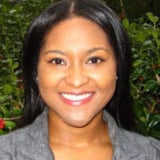Women’s sections at medical society meetings are no longer necessary because we have achieved equity. I wish I could say that with a straight face! Yet, the authors of a Frontiers in Surgery article argued that Women in Neurosurgery sections are “anachronistic and no longer necessary.” We didn’t apply for all-girls neurosurgery residencies, so why should we present at women’s meetings? The question is whether the women’s sections that are intended to elevate women in their fields are unintentionally harming them because they are self-segregating. Before we declare a cure for gender inequities in medicine and abolish women’s sections, we should consider the missions of these groups. Are they pink rooms at the meetings for women to present their scientific studies that were not accepted in the main sessions, or are they societies meeting to discuss leadership, mentorship, and career development specifically for women? I would argue that the former is counterproductive now and would have been in the past. The latter will continue to have relevance long after we have narrowed the numbers gap.
While the concept of female neurosurgery residency spots seems ridiculous now, it was not long ago that I was offered an outside-the-Match residency position because of my gender. The odds were against me as a woman applying for neurosurgery residency at the time but I felt I was a good candidate. It quickly became obvious to me that the outside-the-Match position I was offered was for a woman, an extra spot so as not to give up one of the spots that other people in the Match could rightfully fill. It was an extra spot so they could try out having a female resident. If it didn’t work out they still had their regular matched residents. You know, men. I didn’t want to be a woman neurosurgeon. I just wanted to be a neurosurgeon. Why gender it? I turned down the spot and took my chances in the regular Match to be a regular neurosurgeon.
It was shortly before then that a group of neurosurgeons met and formed the Women in Neurosurgery (WINS) group. There were very few women in the neurosurgical field at the time. The spirit of the group was a supportive community. One founder quoted Madeline Albright, “There’s a special place in hell for women who don’t help each other.” The group provided a voice for the few to argue for better representation in leadership, identify barriers, foster mentorship, and identify and eradicate discriminatory practices. Similar women's specialty groups developed in other medical and surgical specialties where women were underrepresented with similar objectives for members, such as the Association of Women Surgeons (AWS) and Women in Cardiology (WIC). Still, I wasn’t sure about joining WINS. After being offered a female spot, I was worried about being lumped into a special segregated group.
Are these women’s groups truly self-segregating? Self-segregation may begin as seeking others like you for mentorship and camaraderie. The group may offer a venue to elevate the voices of women in your field. Where this self-segregation can become harmful is when it becomes exclusionary. If the topics being presented only to women in a women’s section of a professional society bring to light inequities, they are preaching to the choir. If women’s voices are siloed, those outside the silo will not hear the message, and not understand women’s concerns.
If the women’s sections hold separate scientific sessions at larger specialty meetings I could see both value and detriment. There is value in giving an underrepresented group a platform to present if they are not being recognized in the general sessions. If this is the case, however, a great deal of work needs to be done to make sure there is equity in the selection of speakers and panelists at symposia. Placing women’s talks in a smaller sub-room at a scientific meeting reminds me of the objectionable marketing tool for women’s products: “Shrink it and pink it.” This was the concern of the authors of the Frontiers article, most of whom were international, stating, “Where an uneven distribution of presentations in a conference may be due to gender discrimination, the solution cannot be to reserve spaces for female speakers in pink rooms.” While this may be the case in international WINS groups, I have not experienced this in the WINS meetings in the U.S. The Chair of WINS, Sharona Ben-Haim, MD shared with me in an email, “We have long given up our ‘section’ slot at the annual meetings because we don’t want women to have to choose between our content and other scientific content.” Further, the content presented by WINS is held during luncheon seminars, breakfast sessions, and pre-meeting symposia with a focus on leadership, mentorship, and career development, and is open to speakers and attendees of all genders. When I explored Women’s Sections of other professional medical societies in the U.S., I found a similar format.
Much of the benefit of women’s sections in professional societies lies outside of the annual meetings. Dr. Ben-Haim and her group have launched a successful mentorship program as well as educational content geared toward medical students of all genders. Groups like WINS also provide a virtual community for networking and celebrating successes. Women’s sections are also key in holding their leadership accountable for promoting diversity in the selection of speakers, panelists, authors, and leaders. They have brought to light inequities in physician compensation. Women’s sections have also advocated to make changes in workplaces that benefit all physicians. Benefits like flexible scheduling, childcare subsidies, and expanded family leave time normalize physicians (not just women) having better work-life balance.
Obviously, we desire equity (not just of gender) in scientific communities. Women's sections have developed from a need to elevate women’s voices. While considerable progress has been made in female physician workforce numbers, women are still underrepresented in leadership across specialties. While women represent 37% of physicians, only 5.9% of orthopaedic surgeons are women. I respect the statement the Frontiers authors make, that “professionalism and merit are the only features that should attract attention.” It probably is time for those societies holding pink room seminars to examine equity in the selection of speakers. That alone is not enough to justify abolishing the incredibly powerful women's sections who have brought us to a place where a designated female residency spot would not only be absurd but would be an actionable discriminatory act.
What are your thoughts on women's sections at society meetings? Share in the comments.
Dr. Lazio is a neurosurgeon in Portland, Oregon. She enjoys exploring the Pacific Northwest mountains and beaches with her three humans and two dogs.
Image by Angelina Bambina / Shutterstock







